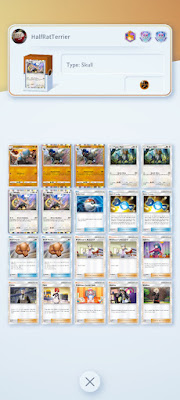 |
| Image from Wikipedia |
#1 - The cartoon is remarkably disconnected from the toys.
This isn't completely out of line with 1980s standards. With the onslaught of toy/cartoon one-two punches of the era, there were often discrepancies between the onscreen product and the items found on store shelves, especially if the toys included comics giving a glimpse into the world of the toys. (See, for example, the early efforts of the Masters of the Universe toyline.) With that said, there's a special kind of disconnect going on here.
The show is called Jayce and the Wheeled Warriors, yet a Jayce figure was never released. In fact, the figures that came with the toys weren't even given names and were essentially generic soldier-drivers onto which kids could paste whatever background they wanted. Now, I actually think this is pretty cool. I had tons of fun with my Wheeled Warriors (despite later trading them for a MASK Switchblade). It's probably worth noting, though, that my little south Georgia town also didn't even have access to the syndicated show, so the only time I was able to see it (same with MASK, fwiw) is when we visited my grandmother in Florida. My kid brain definitely conjured whatever version of WTF it was able to grasp when I did finally look through Grandma's TV listings and find this show about a dude named Jayce.
 |
| Image from the Jayce and the Wheeled Warriors Wiki |
#2 - The cartoon's first episode...and arguably its entire premise...is a mess.
I really look back on the Wheeled Warriors fondly. I like the idea of playing in that universe, especially in the form given to us by the toys, with a small army of freedom fighters who work to save the galaxy/universe from a cabal of evil plant-brains who are self-aware enough to call themselves the Monster Minds. And I'd love for that form of the franchise to be tied closely to the cartoon that lots of kids presumably watched in the '80s. And I've watched the first episode of the show multiple times, wanting to love it each time.
Unfortunately...it just has some issues that are so glaring it's practically impossible to ignore them.
Now...once you get past the first episode, if you just catch up later with where the characters are in their (sort-of) arcs, this isn't much of a problem. The show is well known for the participation of J. Michael Straczynski in its writing (and world-building?), and that may be why it comes across as so much stronger after that introductory story. In fact, the last couple of episodes are probably some of the best 1980s toy-cartoon tales I've ever watched. (Seriously, just find out the basics of the universe and skip to the last couple of episodes if you want to start out enjoying the series...)
But that pilot...oh man...
There's no way I'm going to be able to do justice to this whole topic in one hastily-tapped-out blog post, so I'd like to direct you to some YouTube creators who have delivered excellent looks at the series. First of all, the channel Secret Galaxy (formerly Toy Galaxy, and arguably the best channel on YouTube) has a really nice overview that you can find here.
Second...and I'll embed these here...the channel RetroBlasting produced a three-part series on the franchise that I would imagine has served as a pretty comprehensive introduction to the IP for many people in the nearly 12 years since its upload. Let me note...and I'm not completely sure why I feel the need to note this...that I really became aware of the dude in RetroBlasting's pair of hosts when he had a weird online beef with another guy whose Masters of the Universe (and general toy industry) content I liked. It gave me a weird view of the guy to start with (one that was potentially completely unfair, btw) and has kind of made me assume this fellow's general approach to...everything...is to act annoyed by it. Well, whether that's the truth or not, that attitude is pretty perfect for looking at the Wheeled Warriors and dissecting the franchise's foibles. (And either way, these folks know their stuff and make great videos...)
The first episode here is largely a skit (that's actually pretty funny and demonstrates some of the fundamental problems of the IP well). Part 2 covers the cartoon, and Part 3 hits the toys. If you think they're worth a bit of your time, I hope you enjoy...!
----------
I'm still going to game-ify the Wheeled Warriors on here. Soon. Just a reminder, I want to be able to make a character sheet for this guy:
 |
| Image from eBay |





















